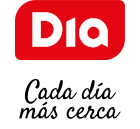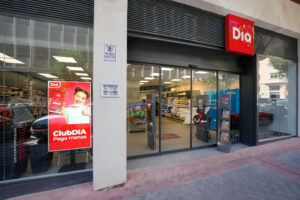DIA posts gross sales under banner of EUR10.3bn, up 1.5% versus the previous year
February 22, 2018
In 2017, the Dia Group posted gross sales under banner of EUR10.3bn, up 1.5% in local
currency versus 2016. The 10.8% sales growth in emerging countries was offset by a 3.3%
fall in Iberia, where in the last quarter of the year the company generated positive
comparable sales thanks to its price-cutting policy. Moreover, in Argentina and Brazil, the
company has continued to capture market share, reaching 14.1% and 7.8% respectively,
reaching adjusted EBITDA growth of 21.4% in local currency, amounting to EUR142.3m.
The group’s comparable sales rose by 3.4% in 2017, with Iberia up by 0.3%. In Q4 2017,
comparable sales improved both in Iberia and in Emerging Countries, with respective rates of
1.1% and 8.6%.
Last year, in Spain and Portugal, 613 stores were remodeled, offering its clients new options
such as a roast chicken point of sale and fresh orange juice machines. Specifically, in Spain,
these two new options have been introduced in 445 and 320 stores respectively. In 2018,
more than 1,000 stores are due to be remodeled, offering new services and solutions, which
represents a good growth base for this year.
In Spain, sales fell by 3.8% to EUR5.7bn due to the reduction in selling space. In the second half of the year, the company regained its price competitiveness in the Dia stores, which is a good starting point for 2018. In the online business in Spain, the company posted sales of EUR58m, and at the end of 2017 the market share was 10%.
As a result of the 3.9% reduction in selling space in Spain, sales have fallen by 3.8%, to EUR5.7bn. In the second part of the year the company’s decision to lower its prices has allowed it to recover its competitiveness in the Dia stores, allows the company to start the year on a good footing.
2017 was an intense year, with a large number of projects implemented. The main business focus is on the customer, the company has made progress with its digitalisation initiative with programmes such as Nexus by Dia (an innovation and talent search platform), and it has strengthened alliances with its partners. Moreover, the company strengthened its alliances with its partners such as Amazon, where, in addition to Madrid, it is present through Amazon Prime in Barcelona and Valencia. The Dia Group recently signed a strategic partnership with CaixaBank to offer a broad range of consumer products to the more than 8 million clients who have the ClubDia loyalty card.
“2017 was the first year since our listing in 2011 that we have not met our financial targets. Our results were lower than the revised guidance issued in October, as the investment in prices was higher than initially anticipated. Our decision to maintain our price leadership in Spain had an impact on our margins that could not be offset by the cost-saving efforts and benefits captured by our procurement alliances. However, our customers have appreciated our new commercial initiatives and we have significantly improved our LFL sales growth in Spain, achieving positive figures in Iberia in Q4 2017. Despite the aggressive pricing policy executed, the Dia banner achieved an adjusted EBITDA margin of more than 8% in Spain, while La Plaza and Clarel continued to increase their operating margins during 2017. With the exception of Spain, all the other countries in which DIA is present (Brazil, Argentina, and Portugal) met the targets set for the year”, stated Ricardo Currás, CEO of the Dia Group.
Underlying net profit amounted to EUR217m, down 19.2% in local currency compared to last year, while net attributable profit fell by 38% in local currency to EUR109, 6m, affected by the negative results of the discontinued operations in China in 2017. The Board of Directors will propose at the Annual General Shareholder Meeting the payment of a gross dividend of EUR0.18 per share, which represents a payout of close to 51%. At year-end, the company had a net debt of EUR891m and a total of 7,388 stores in Spain, Portugal, Argentina, and Brazil.
GLOSARIO
- Gross sales under banner: Total turnover value obtained in stores, including indirect taxes (sales receipt value) in all the company’s stores, both owned and franchised.
LFL sales growth under banner: Growth rate of gross sales under banner at constant currency of the stores that have been operating for more than thirteen months under the same business conditions. - Other items excluded from adjusted EBIT: Volume of costs and revenues the company isolates in the management accounts to gain a better understanding of the underlying performance of the core business during the period. Items usually excluded from adjusted EBIT are classified between “Other cash items” (Expenses relating to acquisitions, expenses for restructuring and efficiency projects, expenses relate to the transfer of own stores to franchises, and gains on disposal of assets), “Expenses related to share-based payments transactions” and “Other non-cash items” (Losses on write-down of fixed assets, impairment of fixed assets and amortization related to the closing of stores).
- Adjusted EBITDA: Operating profit after adding back depreciation and amortization (including amortization related to the closing of stores and impairment of fixed assets), losses on write down of fixed assets, “Other cash items” and “Expenses related to share-based payments transactions”.
- Adjusted EBIT: Operating profit after adding back “Other cash items”, “Expenses related to share-based payments transactions” and “Other non-cash items”.
- Underlying net profit: Net income calculated on net profit attributable to the parent company, adjusted by “Other items excluded from adjusted EBIT”, “Items excluded from financial income and expenses”, “Items excluded from income tax” and “Losses net of taxes of discontinued operations”.
- Basic EPS: Fraction of the company’s profit calculated as net attributable profit divided by the weighted average number of shares.
- Underlying EPS: Fraction of the company’s profit calculated as underlying net profit divided by the weighted average number of shares.
- Net financial debt: Overall financial situation of the company that results by subtracting the total value of company’s short-term, long-term financial debt, other financial liabilities from the total value of its cash, cash equivalents, and other liquid assets. All the information necessary to calculate the company’s net debt is included in the balance sheet.
- Cash from operations: Adjusted EBITDA less “Other cash items”, less Capex excluding acquisitions. This internally calculated cash flow measure is included as one of the key financial metrics of the long-term incentive plan for the company’s top management.






